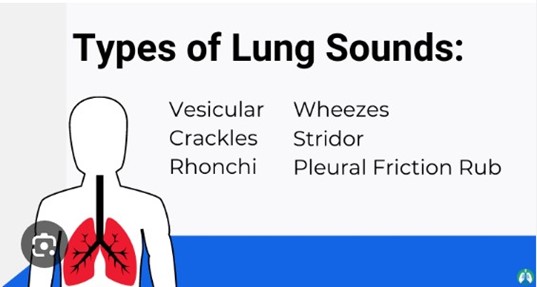The practical nurse (PN) is assisting with the admission of a client with complications of left-sided heart failure. Which focused assessment should the PN implement first?
Heart sounds
Chest pain
Bilateral lung sounds
Mood and affect
The Correct Answer is C
c) Bilateral lung sounds.
Explanation:
When admitting a client with complications of left-sided heart failure, the practical nurse (PN) should prioritize assessing the client's bilateral lung sounds. Left-sided heart failure can result in the accumulation of fluid in the lungs, leading to pulmonary congestion and impaired gas exchange. By auscultating the client's lung sounds, the PN can assess for the presence of crackles, wheezes, or diminished breath sounds, which are indicative of pulmonary congestion and fluid accumulation. This assessment helps to identify the severity of the client's condition and guides further interventions and treatment.
While assessing heart sounds (option a) is important in evaluating cardiac function, assessing lung sounds takes priority as pulmonary congestion is a common manifestation of left-sided heart failure. Chest pain (option b) is a significant symptom that should be assessed promptly, but in this scenario, the focus is on assessing for signs of pulmonary congestion and impaired gas exchange. Assessing the client's mood and affect (option d) is important for a comprehensive assessment, but it is not the priority when the client is admited with complications of left-sided heart failure.
The other options are considered incorrect because they are not the priority assessments when admitting a client with complications of left-sided heart failure.
Option a) Heart sounds: While assessing heart sounds is important in evaluating cardiac function, the priority in this scenario is to assess for pulmonary congestion and impaired gas exchange. Assessing bilateral lung sounds allows the practical nurse to gather immediate information about the client's respiratory status and the presence of fluid in the lungs.
Option b) Chest pain: Chest pain is a significant symptom that should be assessed promptly, as it could indicate various cardiac or respiratory conditions. However, in this specific scenario, the priority is to assess for signs of pulmonary congestion, which can have a more immediate impact on the client's respiratory function.
Option d) Mood and affect: Assessing the client's mood and affect is important for a comprehensive assessment of their emotional well-being. However, when admitting a client with complications of left- sided heart failure, the priority is to assess their physical condition, particularly the respiratory status, to address any immediate concerns related to pulmonary congestion and impaired gas exchange.
 |
Nursing Test Bank
Naxlex Comprehensive Predictor Exams
Related Questions
Correct Answer is A
Explanation
Choice A reason: "Move objects away from the client." This instruction should be included in the teaching because it can prevent injury and protect the client from harm during a seizurE.
Choice B reason: "Restrain the client." This instruction should not be included in the teaching because it can cause injury and increase agitation and anxiety for the client during a seizurE.
Choice C reason: "Place the client on his back." This instruction should not be included in the teaching because it can increase the risk of aspiration and airway obstruction for the client during a seizurE.
Choice D reason: "Insert a padded tongue blade into the client's moutH." This instruction should not be included in the teaching because it can cause injury and choking for the client during a seizurE.
Correct Answer is C
Explanation
Choice A reason: Mitigation is not the level of the National Response Framework that involves educating the residents about evacuation routes and emergency shelters because it is the level that focuses on reducing or eliminating risks and vulnerabilities before a disaster occurs, such as building levees or dams, enforcing zoning codes, or implementing insurance policies.
Choice B reason: Security is not the level of the National Response Framework that involves educating the residents about evacuation routes and emergency shelters because it is not a level of the framework, but rather a cross-cutting function that supports all levels by ensuring the protection of people, property, and information from threats or hazards.
Choice C reason: Preparedness is the level of the National Response Framework that involves educating the residents about evacuation routes and emergency shelters because it is the level that focuses on enhancing the readiness and capabilities of individuals, organizations, and communities to respond to and recover from a disaster, such as developing plans, conducting trainings, or providing education.
Choice D reason: Response phase is not the level of the National Response Framework that involves educating the residents about evacuation routes and emergency shelters because it is the level that focuses on delivering immediate assistance and resources to save lives, protect property, and meet basic needs during and after a disaster, such as activating emergency operations centers, deploying teams, or providing shelter.
Whether you are a student looking to ace your exams or a practicing nurse seeking to enhance your expertise , our nursing education contents will empower you with the confidence and competence to make a difference in the lives of patients and become a respected leader in the healthcare field.
Visit Naxlex, invest in your future and unlock endless possibilities with our unparalleled nursing education contents today
Report Wrong Answer on the Current Question
Do you disagree with the answer? If yes, what is your expected answer? Explain.
Kindly be descriptive with the issue you are facing.
